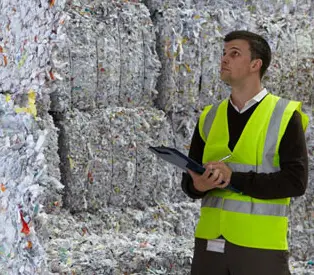Global – An upturn in domestic collections of recovered paper within the major buying regions of Asia has served to keep a lid on export prices to those destinations as well as on their imported volumes. An increasing number of mills in China and elsewhere in Asia have turned to domestic supplies not least because they are generally cheaper, thus helping producers maintain a competitive advantage against a backdrop of weakening prices for their finished products.
OCC prices kicked off last year’s fourth quarter at around US$ 165 per tonne but slipped to US$ 155-plus by mid-November and then ended the year at just below US$ 150. Mixed paper traced a similar pattern in falling from US$ 130-plus per tonne to some US$ 112-plus over the same three-month period. There was lower import demand from India, Indonesia and Vietnam in the final quarter amid the declining prices, with buyers ‘waiting to see if values were going to drop any further’.
Some mills in Indonesia were forced to take substantial amounts of downtime in the fourth quarter in the face of cheap imports of paper and board products from China, South Korea and Sweden. ‘Talks are already taking place at a governmental level regarding the possible introduction of import taxes to protect the local paper industry,’ it is reported. Specifically in the Binh Duong province of South Vietnam, meanwhile, Nine Dragons has announced its intention to build a 500 000-tonne kraft topliner mill while Taiwanese producer Cheng Loong is creating a 1-million-tonne greenfield board mill.
Across in Europe, wet weather has propelled the moisture issue to the fore once again. Demand and prices for mixed papers have softened in the UK, not least because ‘buyers for the Far East have been able to source drier and arguably better-quality fibres elsewhere’, it is acknowledged. In Italy, ‘brisk’ domestic orders are reported for mixed paper, although soft mixed has attracted less demand from the local market but has found a consistent outlet in Germany.
Supply of all recovered paper grades was strong in Germany itself in the final weeks of last year, dovetailing with high overall demand from the country’s paper industry. However, a combination of well-filled mill inventories and holiday production breaks led to ‘moderate’ price reductions of Euro 5 per tonne for the lower grades and nearer Euro 10 for the middle grades.
In contrast, the downward price moves witnessed in Turkey during the third and early fourth quarter of 2015 were reversed in the final weeks of the year, with OCC and mixed paper embarking on significant price climbs that are expected to persist in early 2016.
In northern Europe, markets are being affected by healthy demand in Poland and Ukraine owing to declining deliveries from Russia. However, demand for the news grades has dropped overall in Sweden given that Stora Enso Hylte is now its only newsprint mill using recovered fibre and has halved its consumption compared to some years ago.
The market in Finland, meanwhile, has remained stable ‘with very good demand for all grades’. Good news has also come from the Czech Republic and from France: in the case of the former, recovered paper collections climbed between 10 and 15% last year while purchases increased by some 100 000 tons to around 900 000 tons, of which two-thirds would have been destined for export; and in the latter, Norske Skog’s announcement of the refinancing of its debt in December last year has been applauded as a positive for the French deinking market following the capacity reduction at UPM Chapelle D’Arblay.
On the downside, it is reported from Spain that paper mills’s integrated recycling branches are putting ever more pressure on direct sources in the recovered paper market, to the detriment of traditional recyclers.
This article is based on the latest World Mirror on Recovered Paper produced by the BIR world recycling organisation for the benefit of its members.
Don't hesitate to contact us to share your input and ideas. Subscribe to the magazine or (free) newsletter.



